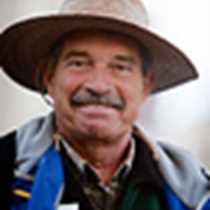Sibenik & Krka National Park, Croatia
Shortly after sunrise we approached the northern coast of Croatia, at a dramatic entrance to a small bay, Sibenik. After breakfast we boarded our buses and drove to the National Park of Krka, a lovely half-hour along the winding Croatian mountainside. Croatia is a country of mountains! Yet we traveled along low valleys up to a large park, known for its soothing waterfalls and terraced cascades. The vegetation is tall, mostly Aleppo pine, and the boardwalk snakes between the different little streams that form the park. Wild fig trees, manna ash and giant reed all compete with the other tall vegetation. The myriad of little streams gurgle to our delight, as we walk down towards a field completely covered with pink cyclamen. The central area of the park contains an ethnographic museum. Here we were awed by the water of the river moving a grain mill (up to 150 kilograms an hour), and a natural washing machine that was used to wash clothes.
At midday we were back on our ship, had had lunch, and immediately set out on foot to visit the cathedral and architectural masterpiece of St. Jacob, at Sibenik, the small city in the bay. This cathedral is built of white limestone, and exquisitely carved on the outside and inside by the three masters who worked on it for a hundred years. The cathedral is a UNESCO World Heritage Site!
Shortly after sunrise we approached the northern coast of Croatia, at a dramatic entrance to a small bay, Sibenik. After breakfast we boarded our buses and drove to the National Park of Krka, a lovely half-hour along the winding Croatian mountainside. Croatia is a country of mountains! Yet we traveled along low valleys up to a large park, known for its soothing waterfalls and terraced cascades. The vegetation is tall, mostly Aleppo pine, and the boardwalk snakes between the different little streams that form the park. Wild fig trees, manna ash and giant reed all compete with the other tall vegetation. The myriad of little streams gurgle to our delight, as we walk down towards a field completely covered with pink cyclamen. The central area of the park contains an ethnographic museum. Here we were awed by the water of the river moving a grain mill (up to 150 kilograms an hour), and a natural washing machine that was used to wash clothes.
At midday we were back on our ship, had had lunch, and immediately set out on foot to visit the cathedral and architectural masterpiece of St. Jacob, at Sibenik, the small city in the bay. This cathedral is built of white limestone, and exquisitely carved on the outside and inside by the three masters who worked on it for a hundred years. The cathedral is a UNESCO World Heritage Site!




